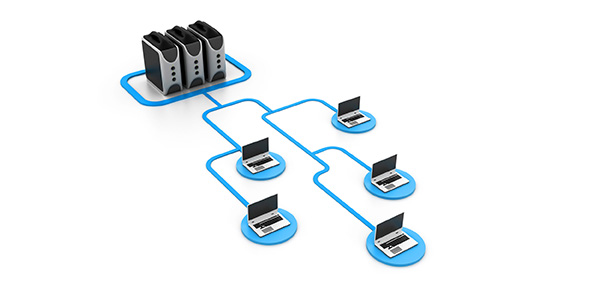IP Address Conversion Assessment

This module will test you on converting IP address from binary to decimal and vice versa.
Questions and Answers
- 1.
Convert the following Binary Number to an IP address (Type each byte of the IP address with a dot (period) between the numbers). 10101100 00010000 00000101 00010100
Explanation
The given binary number is divided into four groups of eight bits each. Each group represents a byte in the IP address. Converting each group from binary to decimal gives us the IP address 172.16.5.20.Rate this question:
- 2.
Convert the IP address below to a 32-Bit binary address (Leave no spaces between numbers or octets): 192.168.1.1
Explanation
The given IP address, 192.168.1.1, is converted to a 32-bit binary address by representing each octet (separated by periods) as an 8-bit binary number. The binary representation of 192 is 11000000, the binary representation of 168 is 10101000, the binary representation of 1 is 00000001, and the binary representation of 1 is also 00000001. Therefore, the 32-bit binary address is 11000000101010000000000100000001.Rate this question:
- 3.
Express The CIDR notation of /24 in dotted decimal notation (Leave no spaces between the bits or bytes, Remember to add zeros at the end of the address).
Explanation
The given CIDR notation of /24 in dotted decimal notation is 255.255.255.0. This is because in CIDR notation, the number after the slash represents the number of bits that are set to 1 in the subnet mask. In this case, there are 24 bits set to 1, which corresponds to the first three octets (255.255.255) in dotted decimal notation. The remaining 8 bits are set to 0, resulting in the last octet being 0.Rate this question:
- 4.
Express The CIDR notation of /27 in dotted decimal notation (Leave no spaces between the bits or bytes, Remember to add zeros at the end of the address).
Explanation
A CIDR notation like "/27" tells you how many bits in an IP address are used for the network part. In this case, "/27" means the first 27 bits are for the network, and the remaining 5 bits are for hosts.
To express this in dotted decimal notation:
The first 8 bits are all "1," which in decimal is 255.
The next 8 bits are also "1," so that's another 255.
The next 8 bits are again "1," making it another 255.
The last 5 bits are "0."
So, the subnet mask in dotted decimal notation is: 255.255.255.224.
This means the first three parts of the IP address are fixed (255.255.255), and the last part can vary from 0 to 224 for different hosts within the subnet.Rate this question:
- 5.
Convert the decimal number 232 to binary notation. (Remember to leave no spaces between the bits or bytes)
Explanation
The decimal number 232 can be converted to binary notation by repeatedly dividing it by 2 and noting the remainder. The remainders, when read in reverse order, give the binary representation. In this case, the process would be as follows:
232 divided by 2 is 116 with a remainder of 0
116 divided by 2 is 58 with a remainder of 0
58 divided by 2 is 29 with a remainder of 0
29 divided by 2 is 14 with a remainder of 1
14 divided by 2 is 7 with a remainder of 0
7 divided by 2 is 3 with a remainder of 1
3 divided by 2 is 1 with a remainder of 1
1 divided by 2 is 0 with a remainder of 1
Reading the remainders in reverse order gives the binary representation 11101000.Rate this question:
Quiz Review Timeline +
Our quizzes are rigorously reviewed, monitored and continuously updated by our expert board to maintain accuracy, relevance, and timeliness.
-
Current Version
-
Oct 13, 2023Quiz Edited by
ProProfs Editorial Team -
May 21, 2011Quiz Created by
Cis307
Harry Potter House Quiz: Which Hogwarts House Do You Belong To?
Harry Potter House Quiz: Which Hogwarts House Do You Belong To?
Grammar Mastery: A Quiz on Simple, Compound, and Complex Sentences
Grammar Mastery: A Quiz on Simple, Compound, and Complex Sentences
 Back to top
Back to top


